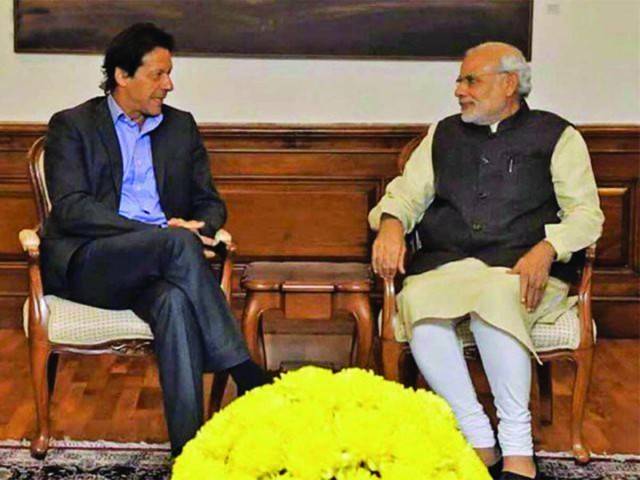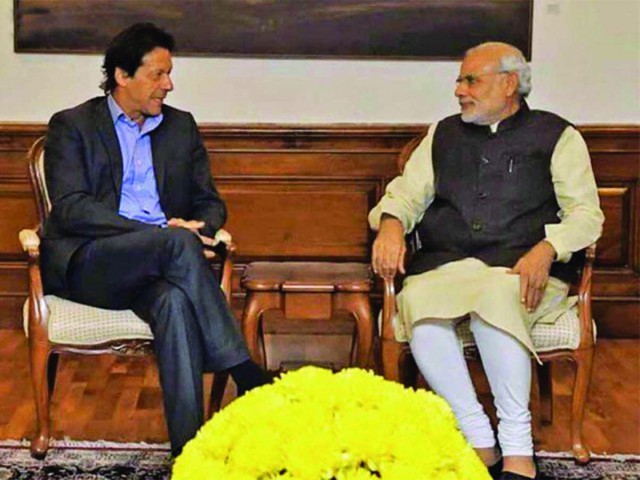
Artful political satire pricks the inflated egos of male politicians and public figures and is especially threatening to populist leaders. Ideal manhood is defined by social, religious and political institutions, gendered and class relations, and state elites. The historically limited models of violent and hegemonic or deviant and subversive masculinities, explain some of the crises of South Asian political masculinities.
Muslim masculinities shaped by cultural practices are distinguished from Islamic textual and exemplary ideals. The early models of Muslim masculinity in India emerged from the akhlaqs of the homosocial Sufi order, encouraging emperors and nobility to emulate the Insan-i-Kamil – the Perfect Man. The refinement of the hedonistic masculinity of the Arabic futtuwat into the spiritual adaab of the Persianised javanmard, was best represented in the figure of the Mughal mirza’i and, prototyped by Jahangir’s imperial servant, Baqir Najm-i-sani.
British rulers contrasted their own imperial ‘manliness’ to the ‘effeminate’ Bengali (Sinha 1995) and sustained military strength by recruiting the hyper-masculinised ‘martial races’ of Muslims and Sikhs. Meanwhile, Muslims were struggling with their own sense of zillat or emasculation at losing their ruling-power masculinities. Despite their political roles, eunuchs were scorned by both European and Muslim rulers to reinforce their sexualised servitude and deny them legal and economic autonomy.

These political encounters inspired cultural reformist and nationalist movements, led by Hindu and Muslim male leaders looking to rehabilitate masculinities lost. The uniforms worn by the men of the Arya Samaj, Muslim paramilitary khaksars, and Congress volunteers became dress-codes of communal masculinities that peaked in 1924, triggered by the stereotyping of the hyper-sexualised Muslim in Rajpal’s satirical pamphlet. The full fury of gendered violence was fueled by the anxieties of Hindu, Sikh and Muslim masculinities engaged in a fratricidal Partition fanned by British patriarchs.
Sukeshi Karma (2020) finds that the caricatures of Jinnah in political cartoons from Indian newspapers of 1947, represent a negative masculinity in contrast to the khadi-clad Gandhi’s ‘proper’ nationalist one. Sketched as disfigured, emasculated and emaciated, Jinnah is synonymised with European fascist leaders, Pandora, and Narcissus. In one cartoon, he is depicted as the courtesan/tawaif with musicians/League members in the background seducing the Maharaja of Patiala while swirling a gharara with a sash saying, ‘Undivided Punjab.’
The audacity to pursue independence qualified Jinnah as a satirical target, depicted as a sold-out seductress who betrays her benefactor. Several cartoons show Jinnah attempting to tame the ‘Frankenstein’ of ‘communal bestiality and riots’ of his own making and personify him as the violence that must be (r)ejected. These pejorative cartoons lingered in Indian papers after Partition, revealing a bitterness that parodied Pakistan in the image of a failed and impotent political masculinity.
In independent Pakistan, a hegemonic masculinity developed from early on with the collusion of men, military, money, and maulvis that defined and became the markers of patriarchy. By the time Bangladesh won its independence in 1971, the masculinist ideal for Pakistan was confirmed as Sunni-Punjabi.
The 1980s saw the emergence of urban political militancy spearheaded by the Shiv Sena in India and the MQM in Pakistan. They typified the aggressive male political activist who graduated from using sticks to guns, sought fatherly approval from patriarchal leaders, and claimed victimhood as minoritised refugee. Common signifiers and mobilising sites for these urban, middle-class, young, political masculinities were gyms, social clubs, video arcades, street corners/pan shops, and motorbikes. Babri masjid was destroyed in India; the landmark commemorating Liaqat Ali Khan was appropriated as ‘Mukka Chowk’ by the MQM in Karachi. Both have not been permitted to revert to their original symbolic relevance.
The nexus of Pakistan’s military-mullah political masculinities tightened from 1979 but the unresolved civil-military relationship was best captured in the sartorial debates over first, Gen Zia’s and then, Gen Musharraf’s wardi/ajkan wardrobe dichotomies. Another example of ambivalent masculinities was underscored by the Jamaat e Islami’s insistence that it was the insurgent Taliban, and not the Pakistani soldier siding with the infidels in the war on terror, who deserved the title of the sacrificial shaheed.
Benazir Bhutto may have troubled masculinist politics, but the Sufi male-order has a deep connection with political power. Women Sufis are not part of the visual culture but, shrine-keepers or khadims draw themselves into Sufi-inspired political posters, along with images of lions and tigers to advertise masculine prowess or spiritual cures for male virility.
If Angan Terha staged deviant masculinity in the austere ‘80s, then the cross-dressing Begum Nawazish/Ali Saleem reflected the liberalisation of sexual politics in the new millennium. The post 9/11 Muslim pietist subject too, realized that he had to abandon aniconism to be politically relevant; the Taliban abandoned camera-shyness and; Burqa Mullahs accepted temporary emasculation to veil and avoid arrest.
Modi sarkar’s focus on (pseudo) scientific and technological progress, and construction of colossal, over-compensatory revisionist statues and idols is a symbolic means to reverse the emasculation of the Hindu male by the Muslim/European colonisers. Imran Khan’s ambition is to renovate the already Islamic Republic into a Riyasat-e-Medina, where Muslim masculinity is regarded as vulnerable to all things western (sex, drugs, rock n roll, secularism, feminism), and Islamophobia is a threat even for Muslim majoritarian contexts.
The fear of Muslim women as demographic fertility bombs drives Modi-masculinity to contain ‘love jihad’ and avert perceived Hindu impotency and minoritisation. In Pakistan, excess Muslim masculinity masquerades lust for the non-Muslim woman as religious duty.
The aggressive, faith-based but ‘business-friendly’ political masculinity that drives leadership in India and Pakistan today, leaves no space for differences of opinion or political dissent which then satirises, memes, or Tik Toks the conceits of these political masculinities.
The article is an excerpt from a forthcoming paper, ‘Muslim Masculinity and Muscular Piety’
Muslim masculinities shaped by cultural practices are distinguished from Islamic textual and exemplary ideals. The early models of Muslim masculinity in India emerged from the akhlaqs of the homosocial Sufi order, encouraging emperors and nobility to emulate the Insan-i-Kamil – the Perfect Man. The refinement of the hedonistic masculinity of the Arabic futtuwat into the spiritual adaab of the Persianised javanmard, was best represented in the figure of the Mughal mirza’i and, prototyped by Jahangir’s imperial servant, Baqir Najm-i-sani.
British rulers contrasted their own imperial ‘manliness’ to the ‘effeminate’ Bengali (Sinha 1995) and sustained military strength by recruiting the hyper-masculinised ‘martial races’ of Muslims and Sikhs. Meanwhile, Muslims were struggling with their own sense of zillat or emasculation at losing their ruling-power masculinities. Despite their political roles, eunuchs were scorned by both European and Muslim rulers to reinforce their sexualised servitude and deny them legal and economic autonomy.

These political encounters inspired cultural reformist and nationalist movements, led by Hindu and Muslim male leaders looking to rehabilitate masculinities lost. The uniforms worn by the men of the Arya Samaj, Muslim paramilitary khaksars, and Congress volunteers became dress-codes of communal masculinities that peaked in 1924, triggered by the stereotyping of the hyper-sexualised Muslim in Rajpal’s satirical pamphlet. The full fury of gendered violence was fueled by the anxieties of Hindu, Sikh and Muslim masculinities engaged in a fratricidal Partition fanned by British patriarchs.
Benazir Bhutto may have troubled masculinist politics, but the Sufi male-order has a deep connection with political power
Sukeshi Karma (2020) finds that the caricatures of Jinnah in political cartoons from Indian newspapers of 1947, represent a negative masculinity in contrast to the khadi-clad Gandhi’s ‘proper’ nationalist one. Sketched as disfigured, emasculated and emaciated, Jinnah is synonymised with European fascist leaders, Pandora, and Narcissus. In one cartoon, he is depicted as the courtesan/tawaif with musicians/League members in the background seducing the Maharaja of Patiala while swirling a gharara with a sash saying, ‘Undivided Punjab.’
The audacity to pursue independence qualified Jinnah as a satirical target, depicted as a sold-out seductress who betrays her benefactor. Several cartoons show Jinnah attempting to tame the ‘Frankenstein’ of ‘communal bestiality and riots’ of his own making and personify him as the violence that must be (r)ejected. These pejorative cartoons lingered in Indian papers after Partition, revealing a bitterness that parodied Pakistan in the image of a failed and impotent political masculinity.
In independent Pakistan, a hegemonic masculinity developed from early on with the collusion of men, military, money, and maulvis that defined and became the markers of patriarchy. By the time Bangladesh won its independence in 1971, the masculinist ideal for Pakistan was confirmed as Sunni-Punjabi.
The 1980s saw the emergence of urban political militancy spearheaded by the Shiv Sena in India and the MQM in Pakistan. They typified the aggressive male political activist who graduated from using sticks to guns, sought fatherly approval from patriarchal leaders, and claimed victimhood as minoritised refugee. Common signifiers and mobilising sites for these urban, middle-class, young, political masculinities were gyms, social clubs, video arcades, street corners/pan shops, and motorbikes. Babri masjid was destroyed in India; the landmark commemorating Liaqat Ali Khan was appropriated as ‘Mukka Chowk’ by the MQM in Karachi. Both have not been permitted to revert to their original symbolic relevance.
The nexus of Pakistan’s military-mullah political masculinities tightened from 1979 but the unresolved civil-military relationship was best captured in the sartorial debates over first, Gen Zia’s and then, Gen Musharraf’s wardi/ajkan wardrobe dichotomies. Another example of ambivalent masculinities was underscored by the Jamaat e Islami’s insistence that it was the insurgent Taliban, and not the Pakistani soldier siding with the infidels in the war on terror, who deserved the title of the sacrificial shaheed.
Benazir Bhutto may have troubled masculinist politics, but the Sufi male-order has a deep connection with political power. Women Sufis are not part of the visual culture but, shrine-keepers or khadims draw themselves into Sufi-inspired political posters, along with images of lions and tigers to advertise masculine prowess or spiritual cures for male virility.
If Angan Terha staged deviant masculinity in the austere ‘80s, then the cross-dressing Begum Nawazish/Ali Saleem reflected the liberalisation of sexual politics in the new millennium. The post 9/11 Muslim pietist subject too, realized that he had to abandon aniconism to be politically relevant; the Taliban abandoned camera-shyness and; Burqa Mullahs accepted temporary emasculation to veil and avoid arrest.
Modi sarkar’s focus on (pseudo) scientific and technological progress, and construction of colossal, over-compensatory revisionist statues and idols is a symbolic means to reverse the emasculation of the Hindu male by the Muslim/European colonisers. Imran Khan’s ambition is to renovate the already Islamic Republic into a Riyasat-e-Medina, where Muslim masculinity is regarded as vulnerable to all things western (sex, drugs, rock n roll, secularism, feminism), and Islamophobia is a threat even for Muslim majoritarian contexts.
The fear of Muslim women as demographic fertility bombs drives Modi-masculinity to contain ‘love jihad’ and avert perceived Hindu impotency and minoritisation. In Pakistan, excess Muslim masculinity masquerades lust for the non-Muslim woman as religious duty.
The aggressive, faith-based but ‘business-friendly’ political masculinity that drives leadership in India and Pakistan today, leaves no space for differences of opinion or political dissent which then satirises, memes, or Tik Toks the conceits of these political masculinities.
The article is an excerpt from a forthcoming paper, ‘Muslim Masculinity and Muscular Piety’

